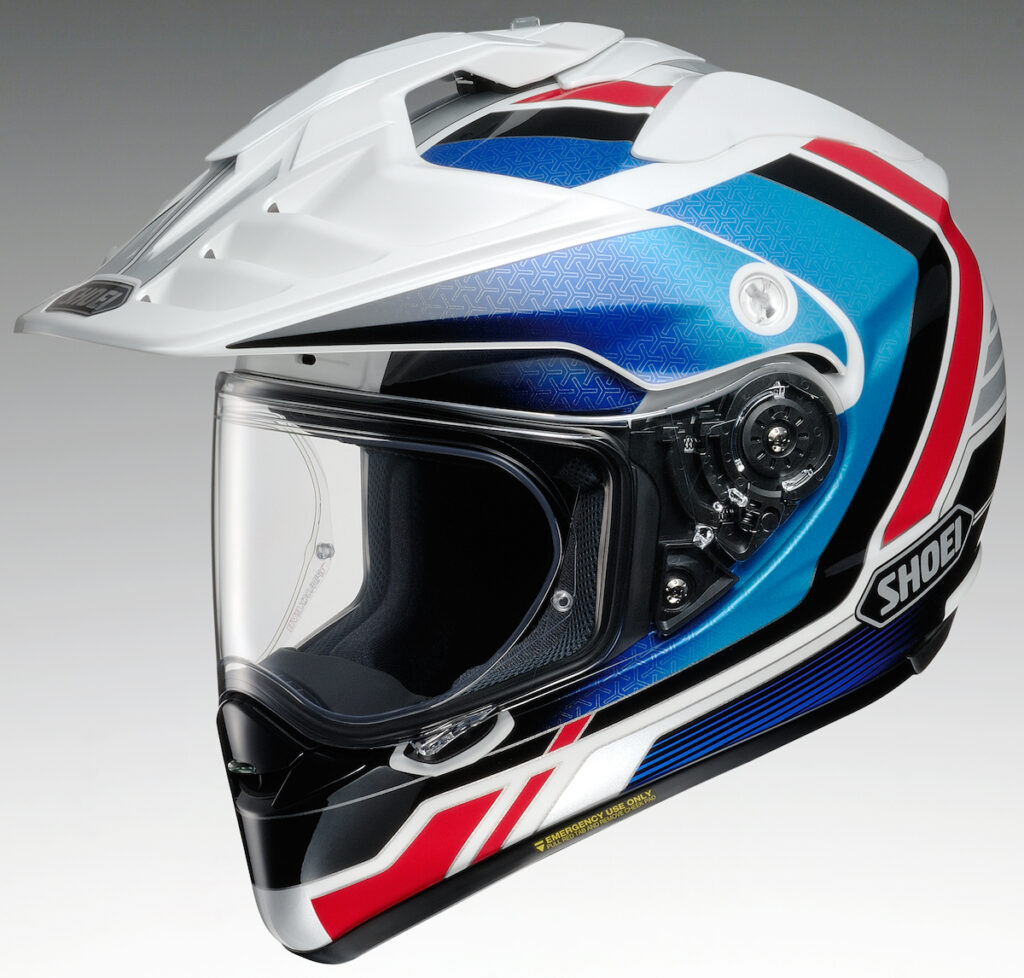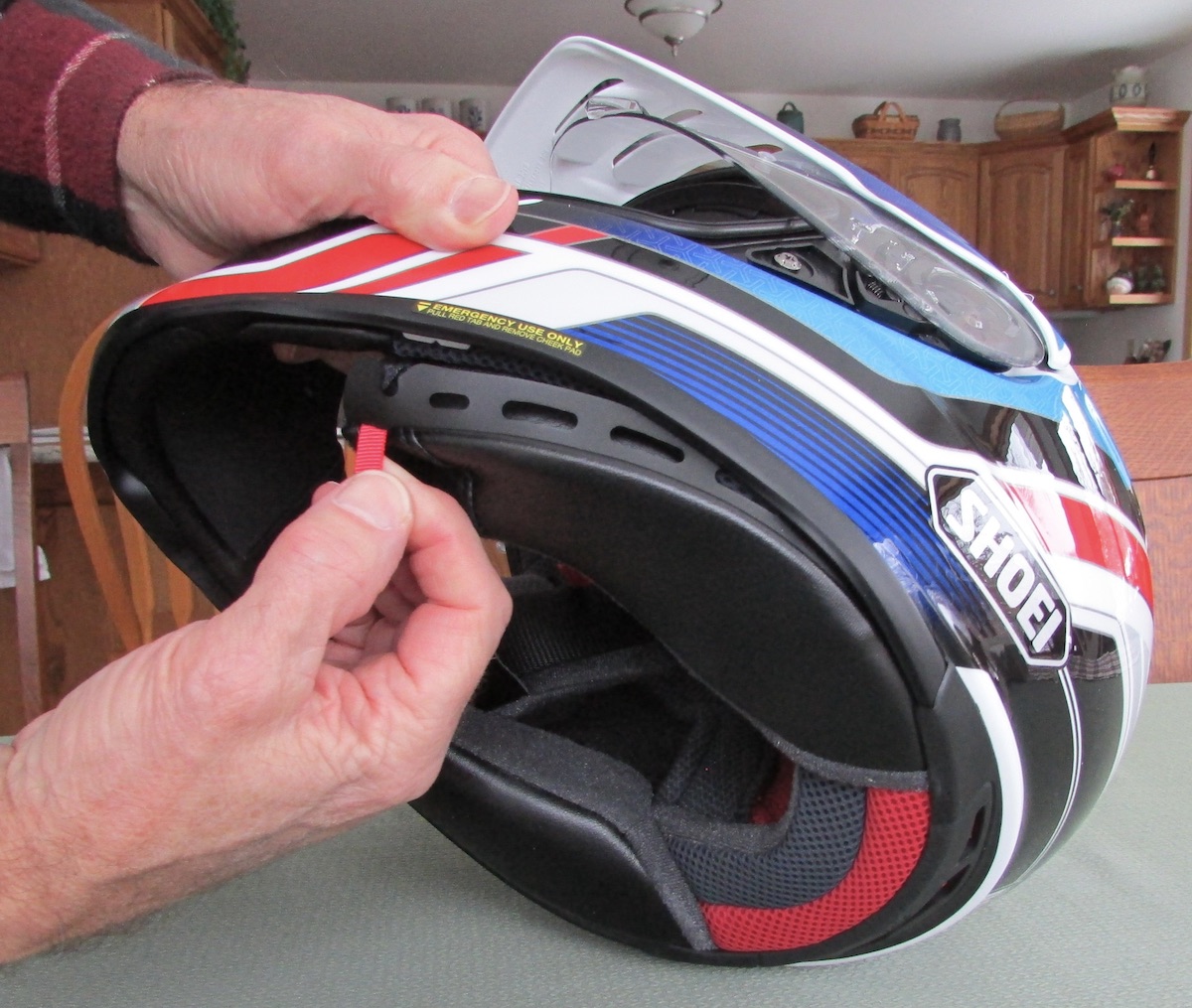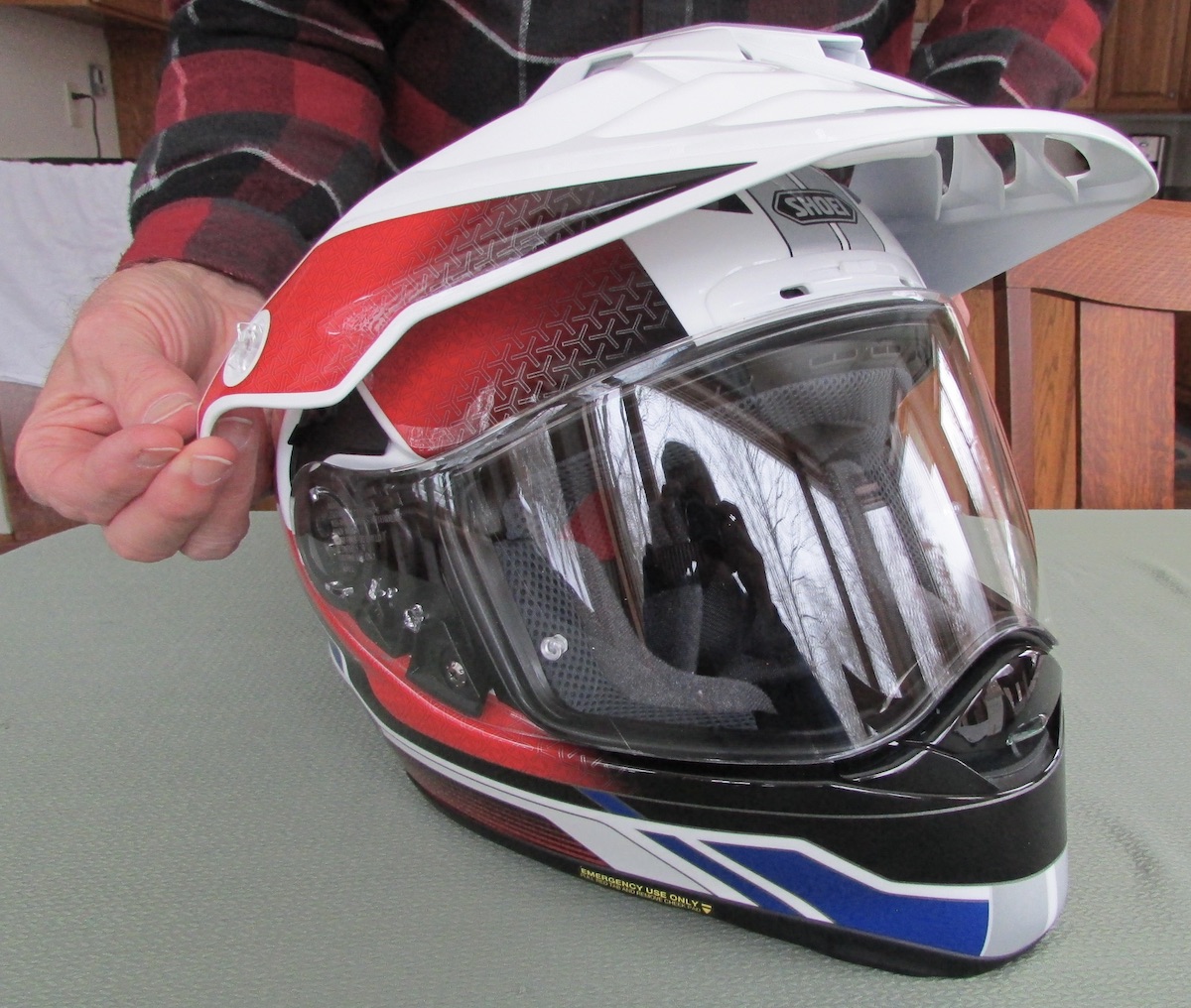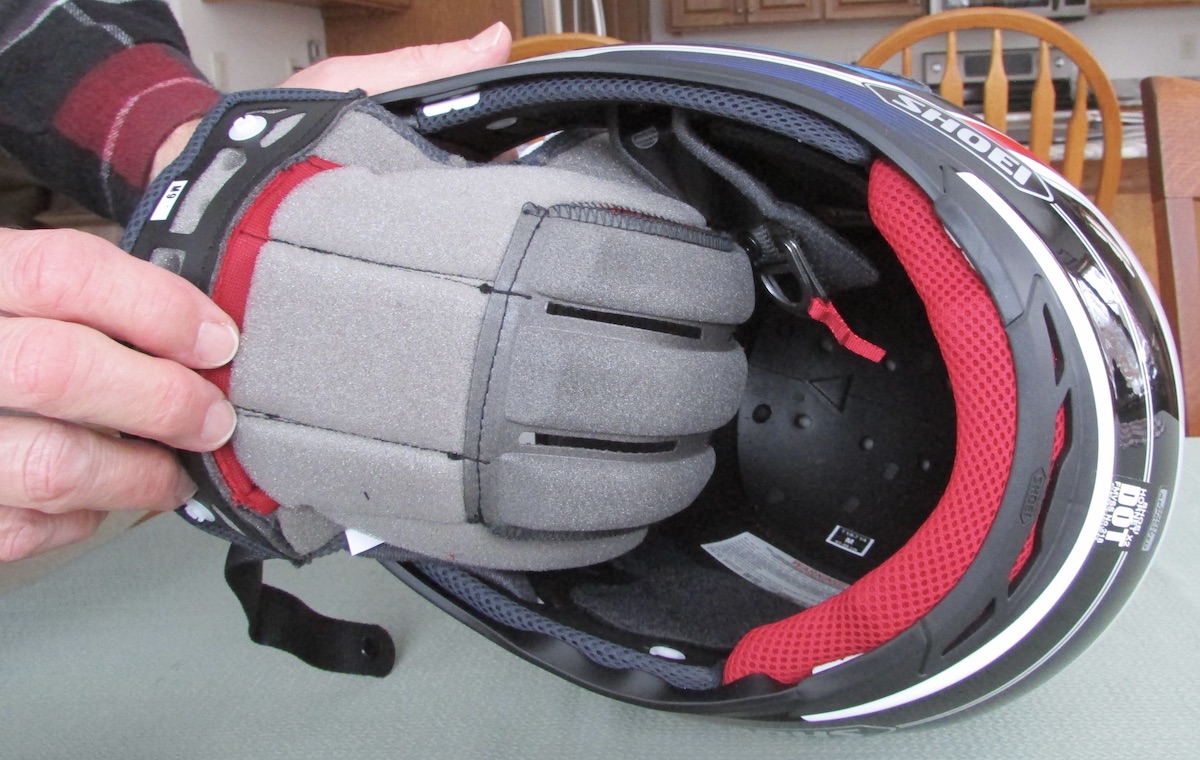Shoei’s Hornet X2 helmet: Part One
I was first introduced to Shoei helmets in 2016 when the company offered their full-face X-12 to MSF instructors at a discounted price. I bought two helmets, one for my wife and one for myself, and they made excellent replacements for our six-year-old Arai helmets.
We had the X-12 helmets for about three years until we crashed in a sandy corner while traveling about 60 mph. As a motorcycle instructor since 1994, I made sure we were always strict ATGATT adherents, and we escaped virtually unscathed. My wife had only a hairline fracture of her collar bone from logrolling down the road, while my 242-foot slide on the asphalt left me with no major injuries despite hitting my head hard. Those X-12s really did their job, but now they’re only wall hangers, so when I was given an opportunity to test a Shoei Hornet X2 Adventure, I jumped at the chance.

Fit and Finish
Fresh out of the box, I was impressed with the shape, style and multi-color design of the helmet. The paint and graphics scheme will match the looks of my BMW 310 and 1250 GS motorcycles.
The size medium Hornet X2 was a little snug to get on at first, but once it was seated, the fit was firm and comfortable. After wearing it around for a while, I noticed no immediate pressure points or hot spots, and Shoei’s sizing scale seems accurate. The company also offers a range of cheek pad sizes to fine tune your fit level if needed. Once installed, the included breath guard and chin curtain did not interfere with taking the helmet on or off.
Shell
The shell of the Hornet X2 uses Shoei’s proprietary Multi¬Ply Matrix AIM+ construction, a mix of fiberglass and organic fibers which Shoei claims provides strength, durability and light weight. My size medium helmet weighed in at 3.9 pounds; however, in the full XS-XXL range, Shoei offers four shell sizes, so your results may vary. Inside the shell, the Hornet X2 uses a dual-layer, multi-density EPS liner for impact absorption with air channels for cooling.
Interior
Shoei claims the new 3D Max-Dry System II absorbs and dissipates sweat twice as fast as traditional nylon interiors, a definite plus for adventure riders. The center pad, cheek pads, ear pads and chin strap covers are easily removed for washing and sanitizing. The ear pads can also be removed to accommodate speakers. The cheek guards have grooves for glasses or sunglasses to slide in with ease. The Hornet X2 also has an Emergency Quick Release System (EQRS), the same technology Shoei uses in VFX-W and X-12 racing helmets, which allows emergency medical personnel to detach the cheek pads by pulling red tabs, thereby reducing strain on the neck before removing the helmet.

Visor
The Hornet X2 replaced the Hornet DS in 2015, and comparing pictures of both, the visor on the X2 looks more streamlined and has more vent louvers for air flow. Removing the visor requires no tools, just turn the thumbscrews on the sides, press the tab on the top of the helmet and pull the visor forward. If you decide to ride with the visor off, I would recommend covering the tab hole to keep rain out. An auto body shop or auto parts store would carry plastic or rubber plugs that would work.

Shield
The Hornet X2’s eye port is larger than the one on the Hornet DX; this increases peripheral vision and easily accommodates goggles. Shoei claims the new CNS-2 shield is optically correct due to a new 3D injection process, and also blocks 99% of UV rays. The QR-N shield base plate is spring-loaded, which pulls the shield tight against the seal when it’s closed. There is also a locking mechanism when the shield is fully closed. A Pinlock EVO anti-fog system comes with the helmet. (Note: The shield can be easily removed without removing the visor.)
Ventilation
Since the Hornet is designed for both on- and off-road riding, Shoei built in quite a collection of vents. The lower front vent is a large, multi-position air intake/defroster for fresh air and clear vision. The two shutter-controlled upper vents funnel air to the forehead, and another large vent under the visor brings air to the crown of your head. Behind the visor are four additional intake/exhaust vents to equalize air pressure, and lastly, there are three neck outlet vents to remove hot air.

Conclusion
Like all Shoei helmets, the Hornet X2 comes with a limited five-year warranty—and Shoei has a reputation for great customer service. The X2 is a mid- to upper-tier helmet, with solid colors $639.99-$649.99 and multi-color graphics $759.99 from Helmet House.
Shoei says the Hornet X2 is designed to maintain peak performance for road and off-road adventure riding, and figuring most popular adventure bikes are probably rated around 80% road use/20% off-road, my educated guess is the Hornet X2 will perform well in both arenas. After a couple of months of riding on and off-road this summer wearing the Shoei Hornet X2, we’ll see if that’s true and I’ll be back with my road test review.
For more information about the Hornet X2, visit Shoei-Helmets.com.



